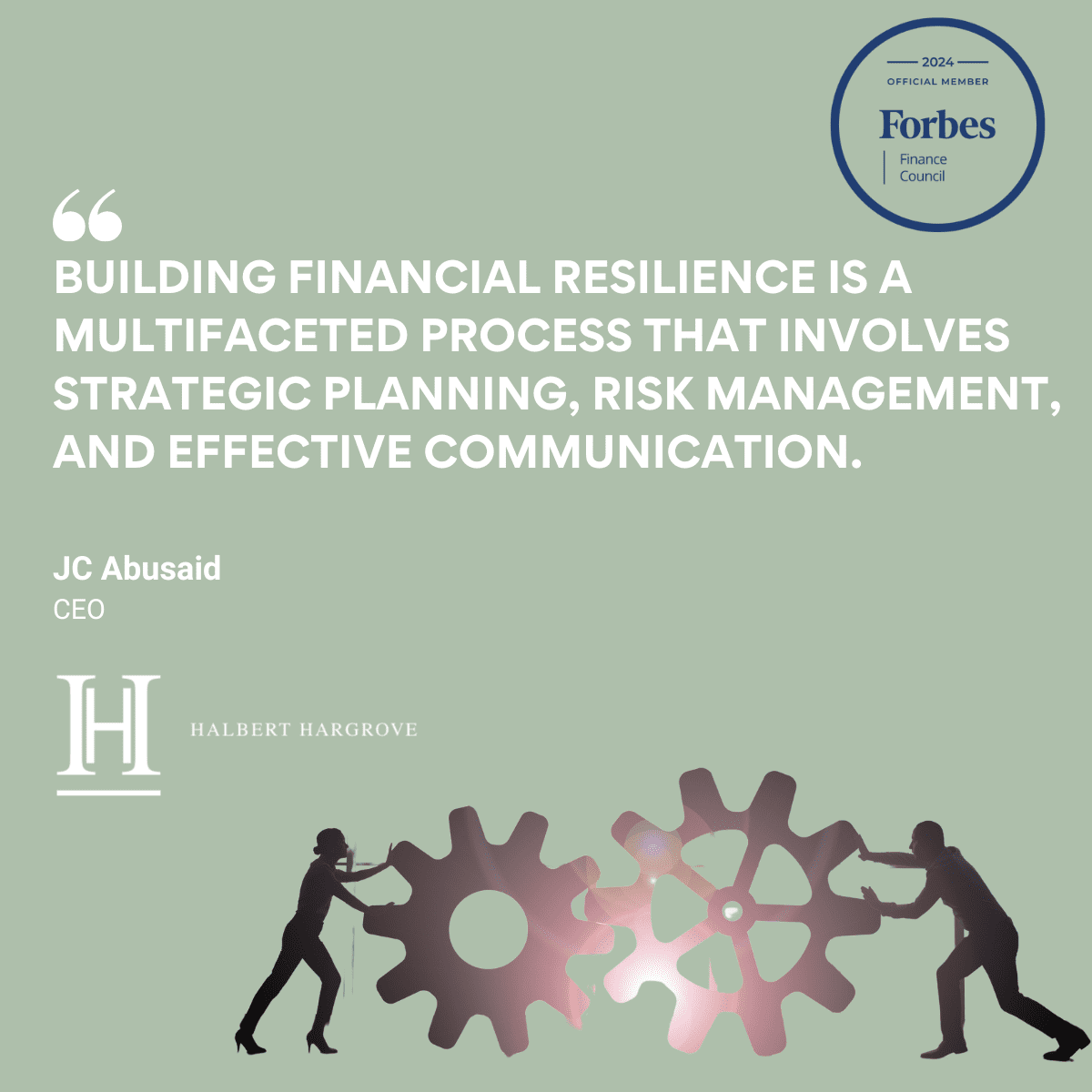By JC Abusaid, CEO/President, featured in Forbes
In the unpredictable economic environment we’re in, it’s hard to overstate the importance of financial resilience. Companies that can adapt and continue operations, even in the face of challenges, are the ones that survive and thrive.
But what is business resilience? It’s a company’s ability to withstand shocks, adjust to new realities and continue moving forward with both short-term stability and long-term growth in mind.
Fundamental Principles Of Financial Resilience
The foundation of business resilience lies in having a clear vision and mission. These guiding principles form the bedrock of your company’s strategy, aligning financial goals with broader organizational objectives. Without this alignment, efforts to build financial resilience can become disjointed and less effective.
Equally important is establishing strong core values and a supportive company culture. A resilient organization knows what it stands for—whether that’s prioritizing profits, people or a balance of both. Transparency and open communication within the organization are vital. These elements help build trust and cohesion, which are essential for business resiliency.
A robust business plan is also crucial. It must include short- and long-term financial strategies that can adapt to economic fluctuations. For example, short-term strategies could include determining your hiring strategy for the year—whether through a recruiter, an intern pool or advertising. The more granular you can get, the better you’ll be, such as identifying the number of promotional videos to be produced and the roles you’ll be hiring for and when.
On the other hand, long-term strategies might involve setting revenue targets for the next three, five and 10 years. You can implement these strategies by identifying necessary hires to support that growth and ensuring adequate working capital to cover overhead expenses for a specified number of months. Another long-term approach is to set incremental margin goals—one for the five-year mark and another for 10 years as you scale.
Strategies For Maintaining Financial Stability
During the 2008 economic downturn, our firm had to demonstrate its resiliency through strategic financial management. We faced a challenging economic climate, but we navigated the crisis effectively. Here’s how we did it:
- Understanding Working Capital: We made sure we had a clear view of cash on hand and our future needs. This allowed us to make informed decisions that supported our overall business resiliency.
- Expense Management: We took a hard look at our expenses and decided to minimize discretionary spending, including cutting bonuses and nonessential services. However, we retained our staff to maintain morale and productivity, a critical component of our business resilience.
- Client Retention:We focused heavily on enhancing our client services. By upgrading our CRM system and making a significant investment, we improved our client communication and engagement. We also moved associates to the front line to manage the increased volume of client calls, ensuring more touchpoints with clients rather than delayed responses. Additionally, we held recurring all-hands meetings to discuss the economic environment and created talking points so advisors could enhance client retention.
- Transparency and Communication: During this crisis, we were fully transparent with our employees about the financial challenges we faced. However, we continued to prioritize our company culture and employees above all else. We were clear that we would not lay off a single employee as long as we had the cash, which protected morale and ensured that every single employee remained with us through the crisis. By consistently communicating our strategies, we navigated the downturn and emerged stronger on the other side.
One of the key lessons we learned is that understanding economic trends and forecasts plays a significant role in maintaining financial resilience. By consistently benchmarking our performance and metrics, we maintained the discipline needed to make informed decisions. This approach was crucial not only during challenging times but also in periods of growth, ensuring we remained resilient regardless of external conditions. Benchmarks provided by Fidelity surveys helped us understand expectations for advisor compensation, staffing levels and expenditure norms—all critical data points that informed our decision making.
Financial Planning And Risk Management
Financial planning and risk management are the pillars of business resilience, so regularly updating and reviewing your business plan is crucial to preparing for economic shifts and potential risks.
Effective risk management involves understanding the potential threats your business faces and having clear contingency plans in place. This includes identifying which expenditures can be reduced if necessary while focusing on financial priorities. For instance, our company regularly evaluates discretionary spending to ensure we know what can be cut when needed.
Strategic planning should be an annual exercise where you assess what has changed and whether the same risks persist. For financial companies, understanding market conditions is crucial. By staying vigilant and prepared, your company can help mitigate the impact of adverse events and maintain financial resilience.
One key strategy for enhancing financial resilience is using strategic planning tools such as the Entrepreneurial Operating System. EOS helps businesses establish clear goals, maintain accountability and create a rhythm of quarterly reviews, all of which are essential for sustaining resiliency and driving growth.


